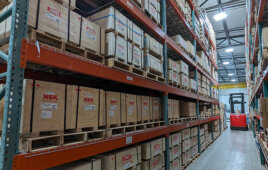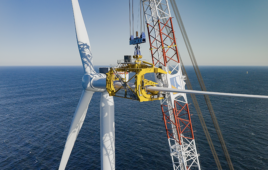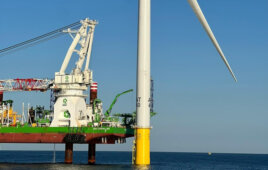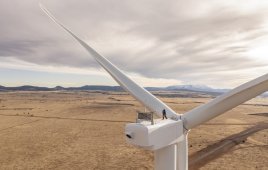Bureau Veritas, a testing, inspection, and certification service, has delivered an Approval in Principle (AiP) to Hyundai Heavy Industries (HHI) for its design and development of “Hi-Float,” a floating offshore wind turbine foundation.
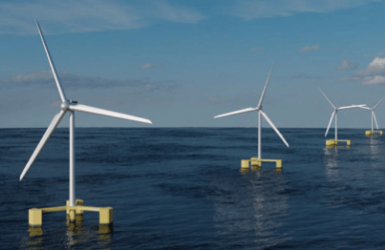
Credit: Hyundai Heavy Industries
Based on HHI’s experience with offshore projects, the offshore floating wind substructure Hi-Float is designed to support a 10-MW wind turbine with semi-submersible and mooring technology. A passive ballast system ensures that risk is kept to a minimum during offshore operations. Hi-Float’s performance in an offshore environment was verified through numerical analysis and wave basin model testing.
“Obtaining the AiP for these innovative floating offshore wind turbine foundations is a meaningful technological milestone that will enable our solutions to contribute to the global decarbonization effort,” said Seon Mook LIM, Executive Vice President of HHI. “In addition, Hi-Float provides higher productivity considering the construction yard infrastructure and efficiency of marine operations. These projects are part of our continuous endeavors and commitment to a sustainable future that is aligned with HHI Group’s ESG vision.
While the majority of offshore wind installations are bottom-fixed, in the coming decades the industry will witness an increase in floating wind capacity, HHI stated in a press release. While many technologies are still under development, floating wind has the potential to complement bottom-fixed technologies by being a feasible foundation in deep water zones.
“Bureau Veritas is proud of the successful completion of this AiP with Hyundai Heavy Industries for the design of its ‘Hi-Float’ floating offshore wind turbine foundation,” said Alex Gregg-Smith, executive VP for Bureau Veritas Marine and Offshore. “This announcement demonstrates the importance of this technology, which will enable the development of future clean energy with zero carbon emissions, while managing risks of floating offshore wind farm development with the efficient and safe operation of large scale wind turbines.”
In 2019, out of Europe’s total offshore wind capacity of 22 GW, the largest regional capacity worldwide, floating wind still only represented 0.2% (45 MW) compared to bottom-fixed installations.
While wind turbine technologies have now had time to mature, the floating foundations that provide the base for floating offshore wind turbines are still going through stages of development. Coupling wind turbines’ aerodynamic loads with floaters’ hydrodynamic ocean loads also represent a complex challenge.
“To address this, it is not only necessary to apply lessons learned from the offshore wind and oil and gas sectors, but also to work with partners who can provide a holistic view of a floating offshore wind technology and project,” HHI stated in a press release.
News item from Hyundai Heavy Industries
Filed Under: Components, Floating turbines, News, Turbines

